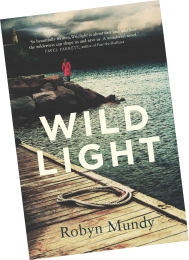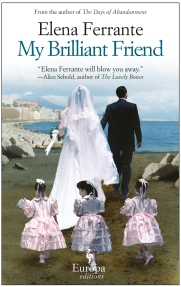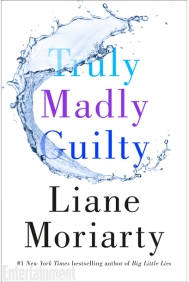 With my times away from home, my blogging pattern tends to be feast or famine. This week sees no nutritional lack. Despite spotty attendance I feel great personal reward in the interactions with readers and guests that maintaining a website generates. Imagine, then, a world with no internet, no email and no mobile coverage; then—as daunting as the prospect may be—picture me in that world for the next six months. Shortly, my partner Gary and I are off to remote Maatsuyker Island, site of Australia’s southernmost lighthouse, for a second term as volunteer caretakers and weather observers. While the island remains happily rodent and snake-free, it also remains staunchly internet-free, just like its old light keeping days, minus the carrier pigeons.
With my times away from home, my blogging pattern tends to be feast or famine. This week sees no nutritional lack. Despite spotty attendance I feel great personal reward in the interactions with readers and guests that maintaining a website generates. Imagine, then, a world with no internet, no email and no mobile coverage; then—as daunting as the prospect may be—picture me in that world for the next six months. Shortly, my partner Gary and I are off to remote Maatsuyker Island, site of Australia’s southernmost lighthouse, for a second term as volunteer caretakers and weather observers. While the island remains happily rodent and snake-free, it also remains staunchly internet-free, just like its old light keeping days, minus the carrier pigeons.

Maatsuyker Island with Needle Rocks in foreground. ©Robyn Mundy
This has been a mega year for me with the launch of my second novel, Wildlight, a story set on Maatsuyker Island. I feel personally touched to have had many lovely responses from readers who in different ways have been moved by the story, along with the relief any writer feels on receiving favourable media reviews. This doesn’t come without the sting of the odd 1- or 2-star reader rating on but—Man-up, Robyn!—such is the nature of writing and reading. This year I also feel fortunate to be amongst the lucky few to receive a grant from toward my new novel in progress. Thank you, ACA, for considering the project worthy of support. Those of us who throw our hats into the ring for such funding understand how competitive and slim the prospects. There are so many talented writers deserving of success, combined with brutal slashes in funding for Australian Arts.
Between ship work and writing research, it’s been a scramble preparing for Maatsuyker Island, months in the planning with the need to provide 6 months of provisions for our island time. Imagine running short of coffee. Or wine. Or chocolate! Imagine forgetting to take books to read. It has been the mother of all shopping lists, let me tell you. As seasoned there will be no shortage of lawn mowing, brush cutting or maintenance tasks; thankfully, there will still be ample time to savour the beautiful island surrounds and to make solid progress on my new novel. Novel 3 will not be a sequel to Wildlight, though my Auntie Muriel is keen to know why I refused to write Wildlight‘s final chapter. 🙂 This new story is set in a vastly different wilderness, about as far away from Maatsuyker Island as is probable to venture.
Earlier in the year I was invited to write an article for magazine on what attracts writers like myself to wild places. With permission from the New South Wales Writers’ Centre, I have reproduced the article below.
For now and always, keep safe and happy. Keep loving books. More from Writing the Wild in March 2017.
Robyn x
———————-
Writing the Wild
This article first appeared in , June 2016, and is reproduced here with permission of the New South Wales Writers’ Centre.
When asked to consider why, as a writer, I feel drawn to wild places and isolation, I initially grappled for an answer, which led to this confession: forget about being a writer; the urge to experience places such as Maatsuyker Island and Antarctica where my novels are set, originates from purely self-seeking motives, from some deep well of longing to experience nature. As a novelist, the fascination for wilderness precedes all else; from immersion in its landscape comes story.
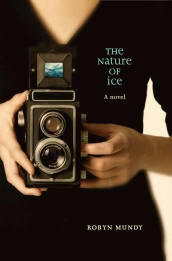 My first novel, The Nature of Ice, draws on Antarctica, the backdrop of my life for nearly 20 years. I have wintered and summered at Australian Antarctic stations, working as a field assistant on science research projects that included a remarkable winter on the sea ice with emperor penguins. I am doubly fortunate to spend several months each year aboard a small ice-strengthened vessel, guiding adventure tours to Antarctica, the Arctic, and other wondrous outposts.
My first novel, The Nature of Ice, draws on Antarctica, the backdrop of my life for nearly 20 years. I have wintered and summered at Australian Antarctic stations, working as a field assistant on science research projects that included a remarkable winter on the sea ice with emperor penguins. I am doubly fortunate to spend several months each year aboard a small ice-strengthened vessel, guiding adventure tours to Antarctica, the Arctic, and other wondrous outposts.
While the Antarctic wildlife rates as a huge drawcard, the ultimate spellbinding seduction for me is the ice. Being within it. That is not to imply some trippy state of serenity. If wonder is one face of awe, the other is a guarded caution in knowing how easily Antarctica can turn from beauty to malevolence. You can’t be in a wild place for long without respect for its might.
The first draw to Antarctica began with someone else’s story. As a young adult I read Lennard Bickel’s This Accursed Land, a dramatised account of polar explorer Douglas Mawson’s 1911–14 Australasian Antarctic Expedition. Along with the iconic images of photographer Frank Hurley, the story of that thwarted expedition ignited my curiosity and imagination. How might such a hostile place feel, where nature determines everything? I had to find a way to go.
 As a contemporary Antarctic novelist, I am not alone in this draw to the frozen south. Favel Parret’s has its origin in the history of Nella Dan, a former Australian Antarctic supply vessel. I posed the question to Favel: what attracts you to wild places?
As a contemporary Antarctic novelist, I am not alone in this draw to the frozen south. Favel Parret’s has its origin in the history of Nella Dan, a former Australian Antarctic supply vessel. I posed the question to Favel: what attracts you to wild places?
‘At first I was drawn back into my childhood memories of the south of Tasmania. Mostly it was the child’s fear of the wild that I wanted to understand. Then at 27 came surfing and the feeling of wanting to be on the wild water, and wanting to find remote wild beaches that were pristine and free of concrete car parks and cars and houses. The clean waters of Bass Strait and the Southern Ocean became vitally important to me.’
Reflecting on the genesis of When the Night Comes: ‘Nella came first. I had to follow her and experience where she went. I had to go to sea and visit the Southern Ocean properly. On my first trip, to Macquarie Island, I found that I was in love with seabirds and could easily spend the rest of my life watching them. That trip was not enough; I had only scratched the surface and I knew I had to go to the ice. It was wonderful to experience Antarctica for the ten-day resupply at Casey Station, but it was the long journey at sea that felt most wild. The moments always changing, the ship always moving, new birds to watch, different whales to see, different swells to navigate. The wildness of that ocean speaks to me in so many ways and I would go again in a heartbeat. It is the wildest place I know.’
 Author Jesse Blackadder also travelled south to understand Antarctica. Her novel draws on the 1930s history of Ingrid Christensen, wife of a Norwegian whaling magnate. Ingrid and two unlikely female companions are each poised to become the first woman to land on Antarctica. Serendipitously, I recently met up with Jesse and asked which came first, the draw to Antarctica, or Ingrid’s story? Like me, like Ingrid Christensen, Jesse’s personal longing to experience Antarctica stretched back years, driven, in Jesse’s case, by images of wildlife and ice. Place first, story second.
Author Jesse Blackadder also travelled south to understand Antarctica. Her novel draws on the 1930s history of Ingrid Christensen, wife of a Norwegian whaling magnate. Ingrid and two unlikely female companions are each poised to become the first woman to land on Antarctica. Serendipitously, I recently met up with Jesse and asked which came first, the draw to Antarctica, or Ingrid’s story? Like me, like Ingrid Christensen, Jesse’s personal longing to experience Antarctica stretched back years, driven, in Jesse’s case, by images of wildlife and ice. Place first, story second.
All three Antarctic novels are fictional works inspired by history, yet the authors’ personal experience infuses an undeniable verisimilitude into their sense of place. Similarly, the voyage across a vast Southern Ocean to reach Antarctica is as fundamental to each story’s narrative arc as it is to the writer’s personal quest. For writers where place sits at the forefront of the work, it behoves us to connect with its landscape, to fully know it through personal experience or memory or research.
 My new novel Wildlight plays out on remote Maatsuyker Island off Tasmania’s South West. Here, my partner Gary and I spent four months living in isolation as volunteer caretakers and weather observers. The inspiration for Maatsuyker Island was triggered by a childhood at our family shack on the edge of the ocean. Maatsuyker amounted to a dot on the wall map, to a reputation for wild weather and the home of Australia’s southernmost lighthouse. Evening weather reports on Dad’s crackly transistor radio conjured images of light keepers trudging to and from the lighthouse in knockdown gales, of a place riven by storm and fearsome seas. As a child I wanted to know such a place. As an adult, I wanted to write it. Yet I couldn’t—not with credibility—until I had experienced it.
My new novel Wildlight plays out on remote Maatsuyker Island off Tasmania’s South West. Here, my partner Gary and I spent four months living in isolation as volunteer caretakers and weather observers. The inspiration for Maatsuyker Island was triggered by a childhood at our family shack on the edge of the ocean. Maatsuyker amounted to a dot on the wall map, to a reputation for wild weather and the home of Australia’s southernmost lighthouse. Evening weather reports on Dad’s crackly transistor radio conjured images of light keepers trudging to and from the lighthouse in knockdown gales, of a place riven by storm and fearsome seas. As a child I wanted to know such a place. As an adult, I wanted to write it. Yet I couldn’t—not with credibility—until I had experienced it.
The sheer force of wild landscapes—their capacity to slough away the noise and clutter of urban life, to command our full attention, to beguile us with their majesty then strike with their hostility—preoccupies me as both a novelist and traveller. Each season on polar voyages I see fellow travellers ‘expanded’ by these other worlds. For some, like me, the experience is a form of meditation, the likes of which is largely unattainable in the workaday world. For others, the journey may mark a pivotal turning point. As sites of transformation, places of wilderness offer a bounty of riches for literary fiction.
It feels important to qualify that a love of nature—of any landscape—is not sufficient to sustain a work of fiction. Within the layers of a compelling story lies human conflict. It must. ‘Without the friction of conflict,’ says author Stephen Fischer, ‘there is no change. And without change, there is no story. A body at rest remains at rest unless it enters into conflict.’
Even during the lead-up to being on Maatsuyker, the anticipation of the island performed its alchemy, stirring characters into being and offering potential conflicts: what would months on Maatsuyker be like for a teenage girl dragged there by her parents, removed from her friends and the comforts of home? What if that family were isolated from each other, grieving for the death of a child? What would the surround of ocean mean for a 19-year-old deckhand who fears the sea and holds a premonition that some day it will take him? And the big question: how do I make best use of island and ocean in a story where these lives collide?
I strive to make place dynamic, to function as a fickle, layered character. Landscape holds a capacity to not only reflect the inner turmoil of characters, but to shape and transform. Who better, it seemed to me, than two young people at odds with their landscape, still making themselves up as they go along?
On a recent walk to a wilderness lookout, I happened upon an interpretative sign with this, by author-environmentalist Aldo Leopold: Our ability to perceive quality in nature begins, as in art, with the pretty. It expands through successive stages of the beautiful to values as yet uncaptured by language. The challenge for the writer remains one of language: to fathom the meanings of wild places through the characters that inhabit them.

Like this:
Like Loading...
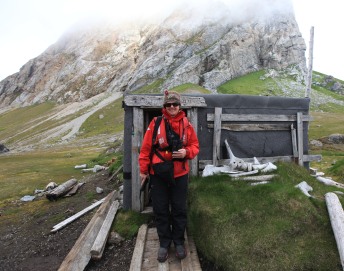


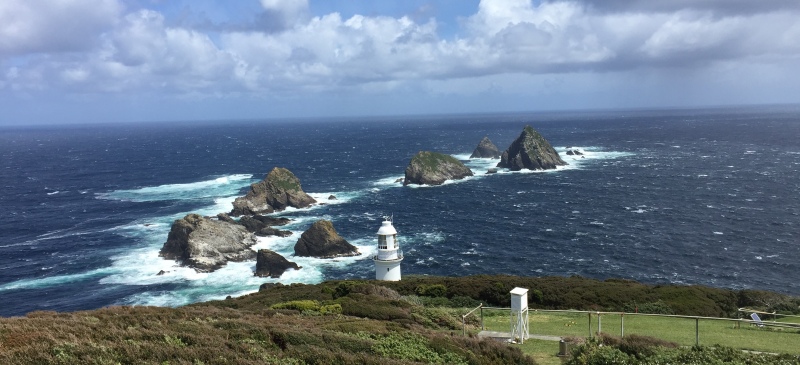
























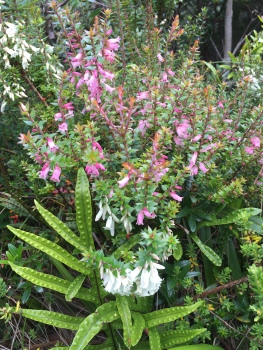
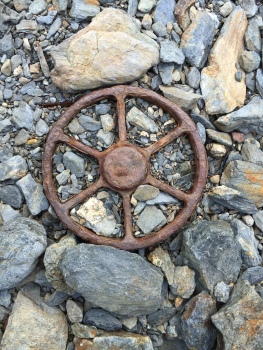






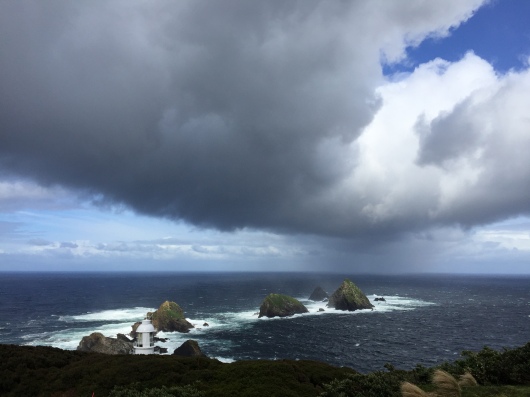











 With my times away from home, my blogging pattern tends to be feast or famine. This week sees no nutritional lack. Despite spotty attendance I feel great personal reward in the interactions with readers and guests that maintaining a website generates. Imagine, then, a world with no internet, no email and no mobile coverage; then—as daunting as the prospect may be—picture me in that world for the next six months. Shortly, my partner Gary and I are off to remote
With my times away from home, my blogging pattern tends to be feast or famine. This week sees no nutritional lack. Despite spotty attendance I feel great personal reward in the interactions with readers and guests that maintaining a website generates. Imagine, then, a world with no internet, no email and no mobile coverage; then—as daunting as the prospect may be—picture me in that world for the next six months. Shortly, my partner Gary and I are off to remote 
 My first novel,
My first novel,  As a contemporary Antarctic novelist, I am not alone in this draw to the frozen south. Favel Parret’s has its origin in the history of Nella Dan, a former Australian Antarctic supply vessel. I posed the question to Favel: what attracts you to wild places?
As a contemporary Antarctic novelist, I am not alone in this draw to the frozen south. Favel Parret’s has its origin in the history of Nella Dan, a former Australian Antarctic supply vessel. I posed the question to Favel: what attracts you to wild places? Author Jesse Blackadder also travelled south to understand Antarctica. Her novel draws on the 1930s history of Ingrid Christensen, wife of a Norwegian whaling magnate. Ingrid and two unlikely female companions are each poised to become the first woman to land on Antarctica. Serendipitously, I recently met up with Jesse and asked which came first, the draw to Antarctica, or Ingrid’s story? Like me, like Ingrid Christensen, Jesse’s personal longing to experience Antarctica stretched back years, driven, in Jesse’s case, by images of wildlife and ice. Place first, story second.
Author Jesse Blackadder also travelled south to understand Antarctica. Her novel draws on the 1930s history of Ingrid Christensen, wife of a Norwegian whaling magnate. Ingrid and two unlikely female companions are each poised to become the first woman to land on Antarctica. Serendipitously, I recently met up with Jesse and asked which came first, the draw to Antarctica, or Ingrid’s story? Like me, like Ingrid Christensen, Jesse’s personal longing to experience Antarctica stretched back years, driven, in Jesse’s case, by images of wildlife and ice. Place first, story second. My new novel
My new novel 

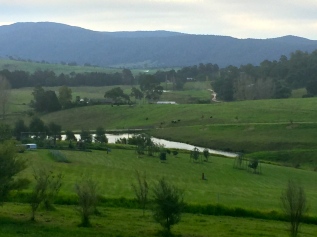 way on a yacht; naturally I was wondering what the heck I was doing and what awaited me on the high seas. Somewhat unexpectedly, the palm reader told me I would live surrounded by cows. Naturally I dismissed him as a phony but in fact he turned out to be right. Ever since I have been surrounded by cows — up in the Whitsundays for ten years and now down here in Bega on the far south coast of New South Wales. When I look up from my
way on a yacht; naturally I was wondering what the heck I was doing and what awaited me on the high seas. Somewhat unexpectedly, the palm reader told me I would live surrounded by cows. Naturally I dismissed him as a phony but in fact he turned out to be right. Ever since I have been surrounded by cows — up in the Whitsundays for ten years and now down here in Bega on the far south coast of New South Wales. When I look up from my JS: Oddly enough, when I was about twenty I woke up one morning with the thought in my head that I was going to be an editor, even though I didn’t have the first clue what an editor did. I was at uni in England at the time and the careers adviser laughed at me and told me I should become an accountant. Thankfully I came to Australia instead because I have the sneaky suspicion I would have ended up in jail for embezzlement. In Sydney I sent out my cv to every publisher in town, still completely ignorant of what an editor did. Thankfully James Fraser, then the publishing director at Pan Macmillan, offered me a job as his secretary. Whilst I was proving myself incompetent at that I was given the opportunity to read through the slush pile and then eventually to learn from two very skilled editors – Jane Palfreyman and Fiona Giles – who gradually trained me up into an editing role.
JS: Oddly enough, when I was about twenty I woke up one morning with the thought in my head that I was going to be an editor, even though I didn’t have the first clue what an editor did. I was at uni in England at the time and the careers adviser laughed at me and told me I should become an accountant. Thankfully I came to Australia instead because I have the sneaky suspicion I would have ended up in jail for embezzlement. In Sydney I sent out my cv to every publisher in town, still completely ignorant of what an editor did. Thankfully James Fraser, then the publishing director at Pan Macmillan, offered me a job as his secretary. Whilst I was proving myself incompetent at that I was given the opportunity to read through the slush pile and then eventually to learn from two very skilled editors – Jane Palfreyman and Fiona Giles – who gradually trained me up into an editing role.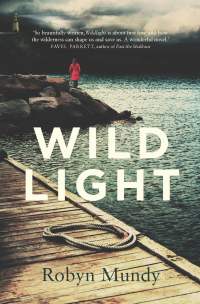 JS: I love your description of the editing of Wildlight and that was exactly what I hoped for. More than anything I want a writer to learn to trust themselves – as you say, to feel empowered to trust in their own creative capacity. It’s very satisfying when an author says, yes, I knew that wasn’t quite right but I didn’t know how to fix it, and then, simply through the process of having their manuscript reflected back to them, they find exactly the right solution. This is a very enlivening process, for them and for me.
JS: I love your description of the editing of Wildlight and that was exactly what I hoped for. More than anything I want a writer to learn to trust themselves – as you say, to feel empowered to trust in their own creative capacity. It’s very satisfying when an author says, yes, I knew that wasn’t quite right but I didn’t know how to fix it, and then, simply through the process of having their manuscript reflected back to them, they find exactly the right solution. This is a very enlivening process, for them and for me.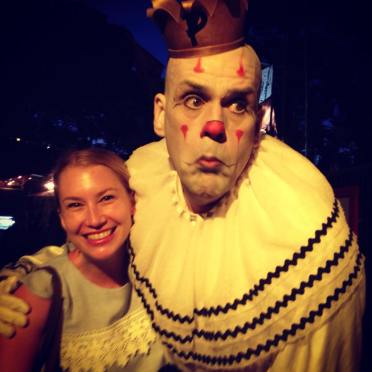
 — Once media coverage starts to be confirmed, the author is provided with an outline of the media due to take place for the book, and receives regular updates on media coverage and any interview requests.
— Once media coverage starts to be confirmed, the author is provided with an outline of the media due to take place for the book, and receives regular updates on media coverage and any interview requests.